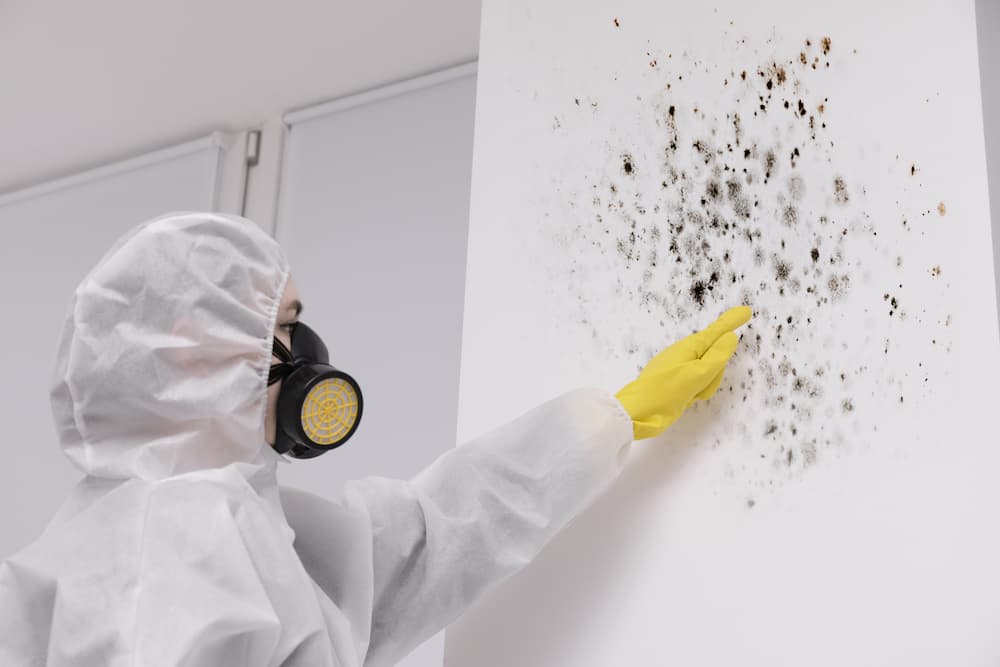Mold is a common, albeit unwelcome, guest in many houses and businesses. You are in the right place if you have noticed strange discoloration or musty odors in your home or office and suspect mold. Mold, especially black mold, can pose serious health risks and structural damage if left unchecked. Steamatic of Kansas City has extensive experience in mold remediation throughout Kansas City. We are here to help you understand what black mold is, how to recognize it, and, most importantly, what actions you should take to protect your home for a healthier living environment.
What is Black Mold?
Stachybotrys chartarum – the scientific name for black mold – is a toxic mold commonly found in areas with high humidity and moisture. This microfungus thrives in dark or damp environments and often lurks in hidden spaces like behind walls, under floors, or within ceiling tiles. Bathrooms, kitchens, basements, attics, and window sills regularly harbor mold since water damage is a common culprit. However, it also releases spores, which makes it easy to transfer to other areas of your home.
Black mold is dark in color, usually a greenish-black hue, and when you wipe it, you may see a green stain. It is typically slimy, wet, and shiny but may appear powdery, often with round clusters with fuzzy white edges.
The presence of black mold can harm your property and health. Because it can trigger asthma symptoms or cause those with mold allergies or weakened immune systems to become sick, early detection and prompt intervention are imperative.
What Does Black Mold Look Like?
Identifying black mold is not always straightforward, as it can resemble other types of mold. However, there are key visual cues to watch out for. Black mold often presents as dark patches on walls, ceilings, or surfaces, resembling soot or dirt. Its texture may vary from fuzzy to slimy, depending on the moisture level of the area. Also, black mold often emits a musty odor similar to rotting wood or damp earth, so even if you cannot see mold, this smell is a sign to look in hidden areas like cabinets, under the refrigerator, or in window sills. If you notice any of these signs, it is crucial to investigate further to determine if black mold is present.
Black Mold vs. Regular Mold
While all molds share similar characteristics, black mold stands out due to its toxicity and potential health risks. Unlike other less-threatening household molds, black mold produces mycotoxins, which can cause severe allergic reactions and respiratory issues in humans. Regular molds, such as Aspergillus or Cladosporium, are less harmful and typically thrive in well-ventilated areas with minimal moisture. However, you should promptly address mold growth to prevent further spread and damage. If you find signs of black mold, contact the experts at Steamatic Kansas City immediately to start remediation.
If You Find Signs of Black Mold Contact the Experts at Steamatic Kansas City
When it comes to black mold remediation, identifying it is the first step towards mitigating its harmful effects. Swift and professional intervention is essential. At Steamatic Kansas City, our team specializes in mold detection, removal, and prevention, ensuring a healthier and safer environment for your home or business. Our comprehensive process uses state-of-the-art equipment to effectively identify black mold and clean and restore your home or business. Do not hesitate to contact us if you suspect black mold is on your property. Trust our experienced technicians to handle the situation with care and expertise, restoring your space to its optimal condition. Contact Steamatic Kansas City today for a cleaner, healthier environment and peace of mind.
IMG Credit: New Africa







